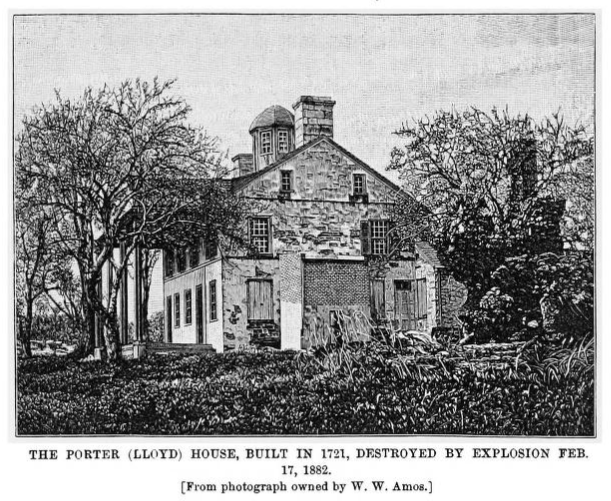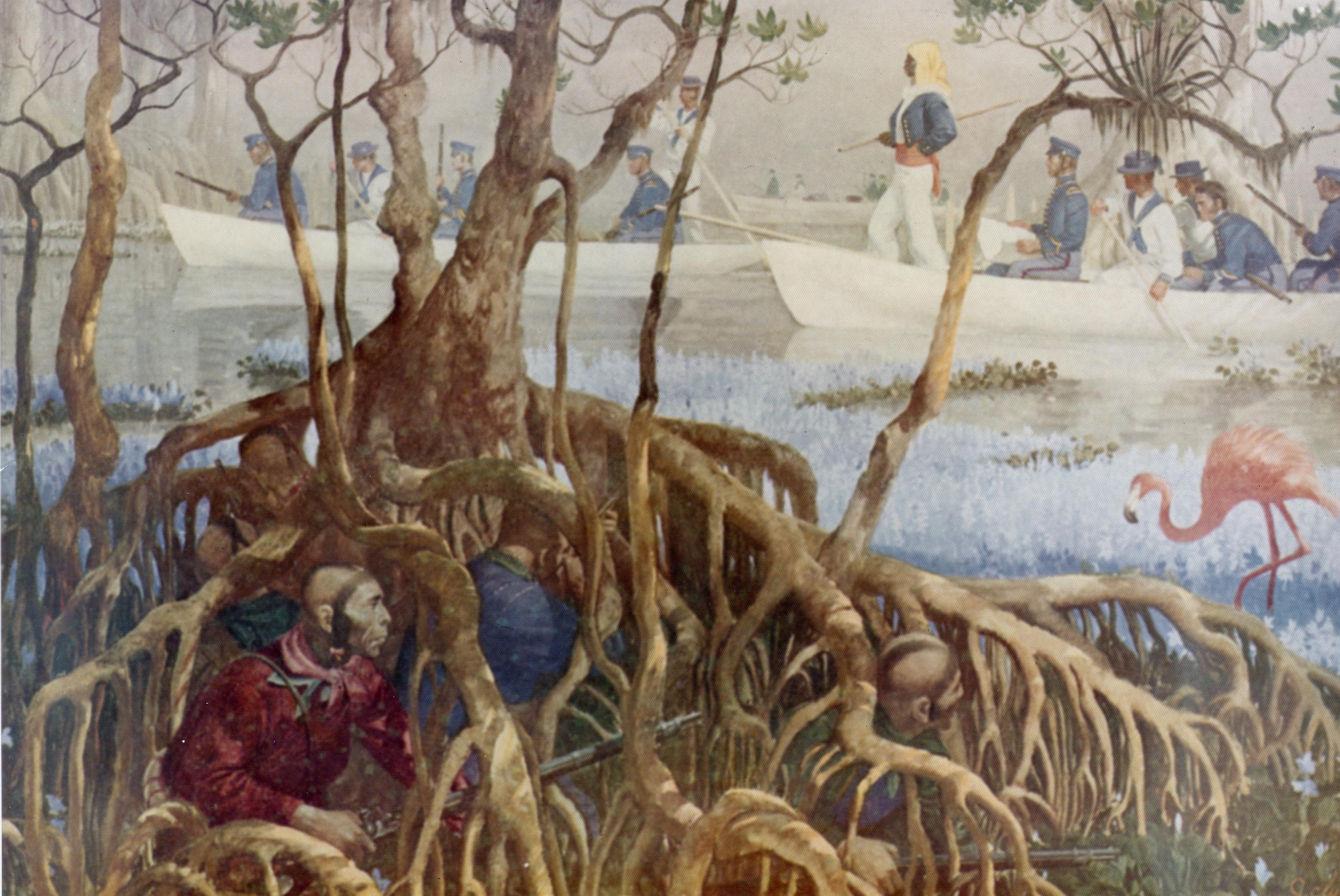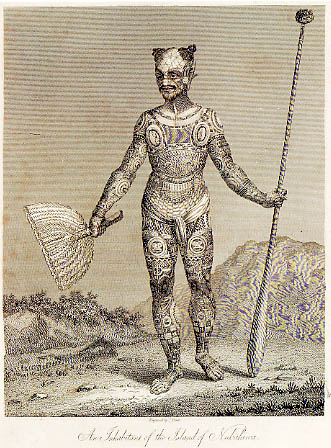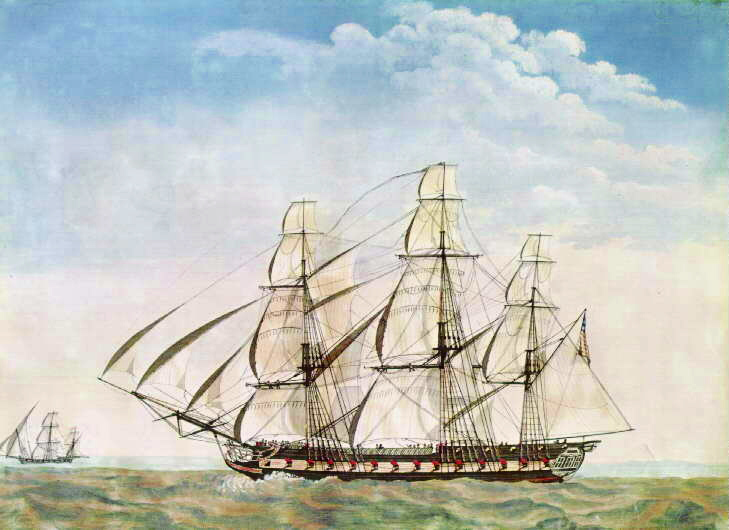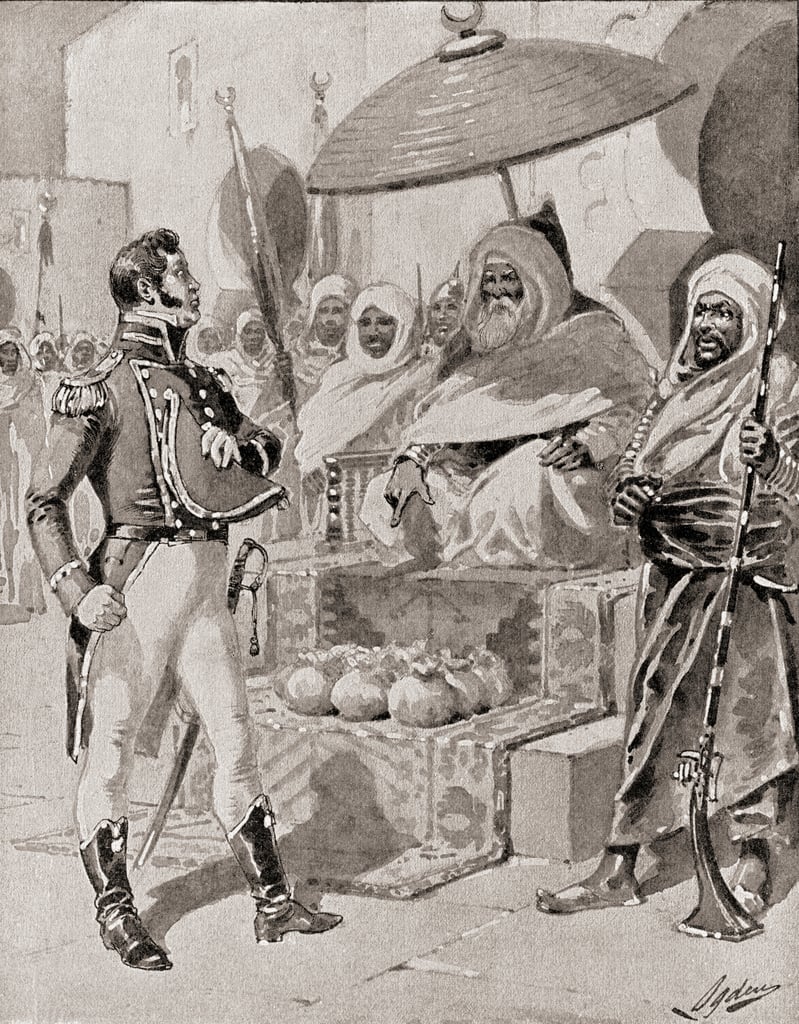|
David Porter (naval Officer)
David Porter (February 1, 1780 – March 3, 1843) was an American naval officer and diplomat. Porter commanded a number of U.S. naval ships. He saw service in the First Barbary War, the War of 1812 and in the West Indies. On July 2, 1812, Porter hoisted the banner "Free trade and sailors' rights" as captain of .Gilje, Paul A. Free Trade and Sailors' Rights in the War of 1812', Cambridge, Cambridge University Press, 2013, , p. 1. The phrase resonated with many Americans. Porter was later court martialed; he resigned and then joined and became commander-in-chief of the Mexican Navy. Porter County, Indiana was named after him. Early life Born in Boston, Massachusetts, Porter served in the Quasi-War with France first as midshipman aboard , participating in the capture of '' L'Insurgente'' on February 9, 1799; then as 1st lieutenant of ; and finally in command of USS ''Amphitheatre''. During the First Barbary War (1801–07), Porter was first lieutenant of , , and and was take ... [...More Info...] [...Related Items...] OR: [Wikipedia] [Google] [Baidu] |
List Of Ambassadors Of The United States To Turkey
The United States has maintained many high level contacts with Turkey since the 19th century. Ottoman Empire Chargé d'Affaires *George W. Erving (before 1831) *David Porter (naval officer), David Porter (September 13, 1831 – May 23, 1840) Minister Resident *David Porter (naval officer), David Porter (May 23, 1840 – March 3, 1843) *Dabney S. Carr, Dabney Smith Carr (February 29, 1844 – October 20, 1849) *George Perkins Marsh (March 11, 1850 – December 19, 1853) *Carroll Spence (February 9, 1854 – December 12, 1857) *James_Williams,_Ambassador, James Williams (May 27, 1858 – May 25, 1861) *Edward Joy Morris (October 22, 1861 – October 25, 1870) *Wayne MacVeagh (October 25, 1870 – June 10, 1871) *George H. Boker (March 25, 1872 – May 1, 1875) *Horace Maynard (June 12, 1875 – July 15, 1880) *James Longstreet (December 14, 1880 – April 29, 1881) *Lewis Wallace (September 6, 1881 – September 4, 1882) Envoy Extraordinary and Minister Plenipotentiary *Lewis W ... [...More Info...] [...Related Items...] OR: [Wikipedia] [Google] [Baidu] |
West Indies Squadron (United States)
The West Indies Squadron, or the West Indies Station, was a United States Navy squadron that operated in the West Indies in the early nineteenth century. It was formed due to the need to suppress piracy in the Caribbean Sea, the Antilles and the Gulf of Mexico region of the Atlantic Ocean. This unit later engaged in the Second Seminole War until being combined with the Home Squadron in 1842. From 1822 to 1826 the squadron was based out of Saint Thomas Island until the Pensacola Naval Yard was constructed. Formation United States Navy ships had for years operated against piracy and the slave trade in the Caribbean and Gulf of Mexico but it was not until 1822 that a permanent squadron was formed. American warships were assigned to anti-piracy operations in the West Indies as early as 1817 but after a September 1821 attack by pirates, in which three American merchant ships were captured, the United States Congress authorized Commodore James Biddle to dispatch a fleet to the C ... [...More Info...] [...Related Items...] OR: [Wikipedia] [Google] [Baidu] |
West Indies
The West Indies is an island subregion of the Americas, surrounded by the Atlantic Ocean, North Atlantic Ocean and the Caribbean Sea, which comprises 13 independent island country, island countries and 19 dependent territory, dependencies in three archipelagos: the Greater Antilles, the Lesser Antilles, and the Lucayan Archipelago. The subregion includes all the islands in the Antilles, in addition to The Bahamas and the Turks and Caicos Islands, which are in the Atlantic Ocean, North Atlantic Ocean. The term is often interchangeable with "Caribbean", although the latter may also include coastal regions of Central America, Central and South American mainland nations, including Mexico, Belize, Honduras, Panama, Colombia, Venezuela, French Guiana, Guyana, and Suriname, as well as the Atlantic Ocean, Atlantic island nation of Bermuda, all of which are geographically distinct from the three main island groups, but culturally related. Terminology The English term ''Indie'' is deri ... [...More Info...] [...Related Items...] OR: [Wikipedia] [Google] [Baidu] |
Battle Of Valparaiso
A battle is an occurrence of combat in warfare between opposing military units of any number or size. A war usually consists of multiple battles. In general, a battle is a military engagement that is well defined in duration, area, and force commitment. An engagement with only limited commitment between the forces and without decisive results is sometimes called a skirmish. The word "battle" can also be used infrequently to refer to an entire operational campaign, although this usage greatly diverges from its conventional or customary meaning. Generally, the word "battle" is used for such campaigns if referring to a protracted combat encounter in which either one or both of the combatants had the same methods, resources, and strategic objectives throughout the encounter. Some prominent examples of this would be the Battle of the Atlantic, Battle of Britain, and the Battle of France, all in World War II. Wars and military campaigns are guided by military strategy, whereas batt ... [...More Info...] [...Related Items...] OR: [Wikipedia] [Google] [Baidu] |
Nuku Hiva Campaign
The Nuku Hiva Campaign was an armed conflict between the United States and the Polynesian inhabitants of Nuku Hiva during the War of 1812. It occurred in 1813, following Captain David Porter's decision to sail his fleet to the island for repairs before continuing his raid against British shipping. Upon arrival, the Americans became involved in a tribal war and allied themselves with the Te I'i people against the Happah and Tai Pi clans. Background Operations in the Pacific began in early 1813 when Captain Porter entered the Pacific, via Cape Horn, in the thirty-two gun frigate . Originally Porter was assigned to rendezvous with two other warships but both encountered enemy resistance before their meeting and Porter went around the Horn alone. The mission was to harass the British whaling industry off South America and around the Galápagos Islands. For months the Americans cruised the South Seas and they captured several British whalers that they placed under navy command. ... [...More Info...] [...Related Items...] OR: [Wikipedia] [Google] [Baidu] |
Action Off Charles Island
The action off Charles Island was a naval battle fought during the War of 1812 in the summer of 1813 off Charles Island in the Galapagos. An American squadron of three vessels attacked three British armed whalers, and captured them. The engagement was notable for being one of the few to occur in the Pacific Ocean during the war and involved United States Marine Lieutenant John M. Gamble, the first U.S. Marine to command an American warship. Background In the War of 1812 between the United Kingdom and the United States, American Captain David Porter, in the thirty-six gun frigate , led a fleet of armed vessels in the South Pacific in a commerce raiding operation. At the time of the action, ''Essex'' was accompanied by two smaller vessels, recently captured from the British and classified as sloops-of-war by Captain Porter. They were the 10-gun of 338 tons burthen and the 8-gun of 280 tons burthen. Porter had sent the rest of his fleet to Valparaiso, Chile, to be sold wh ... [...More Info...] [...Related Items...] OR: [Wikipedia] [Google] [Baidu] |
USS Essex (1799)
The first USS ''Essex'' of the United States Navy was a 36-gun or 32-gun sailing frigate that participated in the Quasi-War with France, the First Barbary War, and in the War of 1812. The British captured her in 1814 and she then served as HMS ''Essex'' until sold at public auction on 6 June 1837. Service history The frigate was built by Enos Briggs, Salem, Massachusetts, at a cost of $139,362 subscribed by the people of Salem and Essex County, Massachusetts, Essex County, to a design by James Hackett. ''Essex'' was armed with mostly short-range carronades that could not hope to match the range of 18- and 24-pounder naval guns. She was launched on 30 September 1799. On 17 December 1799 she was presented to the United States Navy and accepted by Captain Edward Preble. Quasi War: On 22 December she departed Salem, Massachusetts for Newport, Rhode Island. On 28 December she joined USS Congress at Newport. On 6 January 1800, ''Essex'', under the command of Captain Preble, depart ... [...More Info...] [...Related Items...] OR: [Wikipedia] [Google] [Baidu] |
War Of 1812
The War of 1812 was fought by the United States and its allies against the United Kingdom of Great Britain and Ireland, United Kingdom and its allies in North America. It began when the United States United States declaration of war on the United Kingdom, declared war on Britain on 18 June 1812. Although peace terms were agreed upon in the December 1814 Treaty of Ghent, the war did not officially end until the peace treaty was ratified by the 13th United States Congress, United States Congress on 17 February 1815. AngloAmerican tensions stemmed from long-standing differences over territorial expansion in North America and British support for Tecumseh's confederacy, which resisted U.S. colonial settlement in the Old Northwest. In 1807, these tensions escalated after the Royal Navy began enforcing Orders in Council (1807), tighter restrictions on American trade with First French Empire, France and Impressment, impressed sailors who were originally British subjects, even those who ... [...More Info...] [...Related Items...] OR: [Wikipedia] [Google] [Baidu] |
Action Of 31 October 1803
The Action of 31 October 1803 was a naval engagement between the United States Navy and the Tripolitan Navy during the First Barbary War. During the blockade of Tripoli, USS ''Philadelphia'' ran aground while chasing a Tripolitan ship. ''Philadelphia'' was captured by the Tripolitans and enslaved its entire crew. The capture of ''Philadelphia'' was a major setback for the Americans and was considered humiliating. Prelude In 1803, the US captain, Edward Preble, ordered the USS ''Philadelphia'' and USS ''Vixen'' to blockade Tripoli. The two ships departed from Malta and arrived there on October 7. The captain of ''Philadelphia'', William Bainbridge, noticed that some Tripolitan ships were near the city. He ordered USS ''Vixen'' to sail westward. A few days later, Bainbridge continued to blockade without achieving much. Action On October 31, the US captain noticed a twelve-gun Tripolitan ship, ''Mastico'', attempting to enter the city after a voyage from Derna. The USS ''Philade ... [...More Info...] [...Related Items...] OR: [Wikipedia] [Google] [Baidu] |
Action Of 2 June 1803
The Action of 2 June 1803 was a military engagement between the US Navy and the Tripolitans during the First Barbary War. The Americans launched a raid to burn Tripolitan vessels carrying wheat. The raid ended in failure, and the wheat cargo was saved. Prelude On June 1, 1803, the USS ''Enterprise'' gave signals to the USS ''New York'' that 10 small Tripolitan merchant ships were carrying wheat about 35 miles northwest of the city and that USS ''Adams'' was watching them. The US ships gave them chase and forced them to run aground. At the scene, around 1,000 Tripolitan men were gathered at the merchant ships, which ran aground to protect them from the Americans. The commodore, Richard Valentine Morris, ordered a reconnaissance. David Porter had a boat with five men and spectated the area during the night. He went back and told the commodore that landing was advisable. Raid The next day, nine boats carrying 50 were entrusted with this mission, led by David Porter. Their mission ... [...More Info...] [...Related Items...] OR: [Wikipedia] [Google] [Baidu] |
First Barbary War
The First Barbary War (1801–1805), also known as the Tripolitan War and the Barbary Coast War, was a conflict during the 1801–1815 Barbary Wars, in which the United States fought against Ottoman Tripolitania. Tripolitania had declared war against the United States over disputes regarding tributary payments in exchange for a cessation of Tripolitanian commerce raiding at sea. United States President Thomas Jefferson refused to pay this tribute. The First Barbary War was the first major American war fought outside the New World, and in the Arab world, besides the smaller American–Algerian War (1785–1795). Background and overview Barbary corsairs and crews from the quasi-independent North African Ottoman provinces of Algiers, Tunis, Tripoli, and the independent Sultanate of Morocco under the Alaouite dynasty (the Barbary Coast) were the scourge of the Mediterranean. Capturing merchant ships and enslaving or ransoming their crews provided the rulers of these natio ... [...More Info...] [...Related Items...] OR: [Wikipedia] [Google] [Baidu] |
